Micron C400 mSATA (128GB) SSD Review
by Anand Lal Shimpi on April 10, 2012 8:00 AM ESTRandom Read/Write Speed
The four corners of SSD performance are as follows: random read, random write, sequential read and sequential write speed. Random accesses are generally small in size, while sequential accesses tend to be larger and thus we have the four Iometer tests we use in all of our reviews.
Our first test writes 4KB in a completely random pattern over an 8GB space of the drive to simulate the sort of random access that you'd see on an OS drive (even this is more stressful than a normal desktop user would see). I perform three concurrent IOs and run the test for 3 minutes. The results reported are in average MB/s over the entire time. We use both standard pseudo randomly generated data for each write as well as fully random data to show you both the maximum and minimum performance offered by SandForce based drives in these tests. The average performance of SF drives will likely be somewhere in between the two values for each drive you see in the graphs. For an understanding of why this matters, read our original SandForce article.
Many of you have asked for random write performance at higher queue depths. What I have below is our 4KB random write test performed at a queue depth of 32 instead of 3. While the vast majority of desktop usage models experience queue depths of 0 - 5, higher depths are possible in heavy I/O (and multi-user) workloads:
Sequential Read/Write Speed
To measure sequential performance I ran a 1 minute long 128KB sequential test over the entire span of the drive at a queue depth of 1. The results reported are in average MB/s over the entire test length.

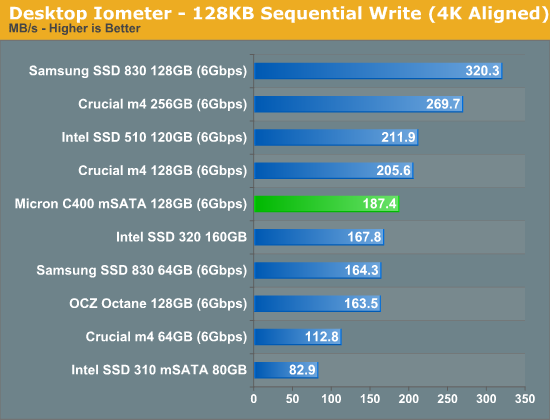
AS-SSD Incompressible Sequential Performance
The AS-SSD sequential benchmark uses incompressible data for all of its transfers. The result is a pretty big reduction in sequential write speed on SandForce based controllers.
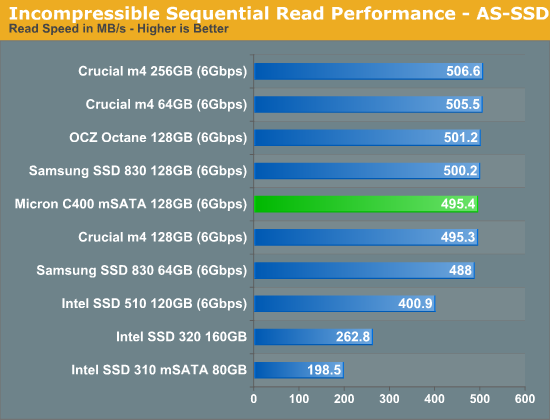
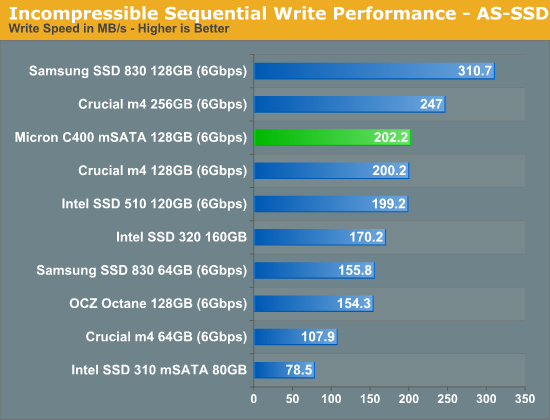


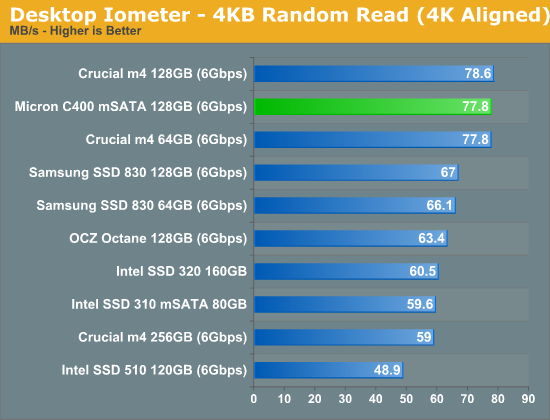

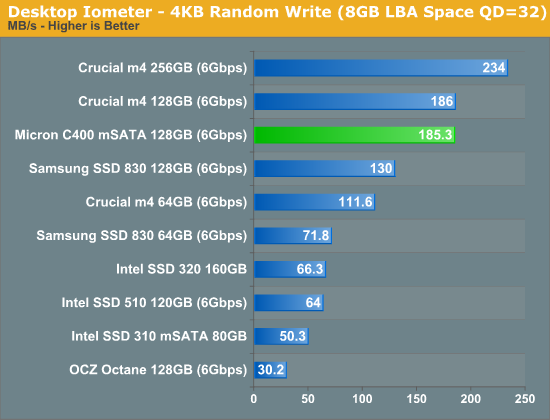








47 Comments
View All Comments
Chaitanya - Tuesday, April 10, 2012 - link
Is conclusion page missing? or it is not present intentionally.bobsmith1492 - Tuesday, April 10, 2012 - link
Same as the last article... this one is just a refresher so all the conclusions are on the first page and the rest are just backup data.ImSpartacus - Tuesday, April 10, 2012 - link
That's a neat way of doing it.I hope Anandtech can still do in-depth looks at important products, but this format is a happy medium for less important products that still deserve a review.
icrf - Tuesday, April 10, 2012 - link
I agree. I like the format. They could probably tell from access logs that a lot of readers do what I do: read the first page (introduction), then read the last page (conclusion), skipping everything in between. It makes life easier, even if costs you a page of ad impressions.LancerVI - Tuesday, April 10, 2012 - link
....and that's the truth of it. I agree!johan851 - Tuesday, April 10, 2012 - link
I like the layout also. Though you'll get less ad revenue when I skip the rest of the pages. ;)AssBall - Tuesday, April 10, 2012 - link
I agree and hope to see some of the mobo reviews follow suit, after the nice and complete initial chipset analysis reviews you don't really need a full blown review, just the basics.CaioRearte - Tuesday, April 10, 2012 - link
I don't think so. When you're reading something that's interesting, I think you tend to check out the ads more than when you're just scrolling down pages of benchmarks.leexgx - Thursday, April 12, 2012 - link
i only use the Print page button (do not print it) as it makes all the pages onto one page (wish other sites would do it) so its only 1 page changei prefer to have one full page that's just me
jaydee - Tuesday, April 10, 2012 - link
Price, availability?